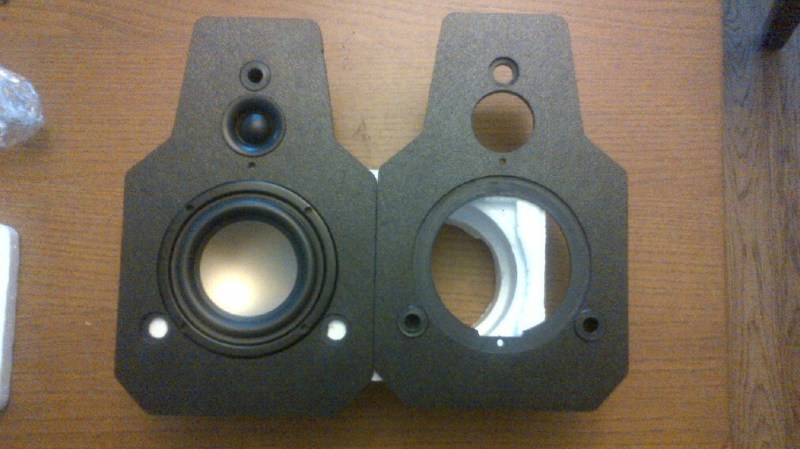There is something refreshing about a neat, portable audio hack – especially one than involves making a DIY Speaker Box from scratch. [Dave] had some time to spare and his ShapeOko was lying idle and hankering for some attention. He needed a small speaker that he could place outside when entertaining guests. After some quick homework, he zeroed in on the speakers he would use.
Using some online resources , he did some basic math to figure out the box size and shape, but then eventually threw caution to the wind and went ahead with the design he had in mind. Most speaker box builds use some form of wood or MDF. [Dave] had 9mm thick ABS sheets lying around and decided to use them instead. He used an interesting technique for putting the box together. The front and rear panels had slots milled in to them to follow the shape of the side panels. The two side panels had strategically cut slots half way through the thickness of the ABS to make it easier to heat bend them. He then used a heat gun to bend the side panels to fit them to the slots on the front and back panels. In the end, we’re guessing he used just four pieces of ABS to build a complex shape. Since the HiVi B3N speakers are full range, he also built a 1st order crossover to make sure the highs were diverted to the tweeters. All in all, a neat, clean build.
















Probably cheaper than ViFi’s outdoor speakers. Both will succumb to UV rot on the rubber rims in the long run.
Appealing shape with lower internal reflections.
That’s not necessarily true.
A screen with a UV treated cloth backing solves the UV rot problem, but honestly you can not expect a speaker to last more than 5 years outside. Even the $15,000 each outdoor stadium stuff is rebuilt every 3-5 years. I know because the company I work for does this on a regular basis.
I have many speakers that have lasted more than 3-5 years outside. What am I doing right that the company you work for is doing wrong?
Could be climate and location. Here in Louisiana, the heat and humidity aren’t kind to outdoor speakers. Coastal areas with salt spray probably aren’t kind either, though I’ve seen speakers built with specialized materials to resist this.
Summer heat and humidity in here NW Ohio is fairly tortuous, as well. And then we have winters to contend with: We can see temperature swings of over 120F in a given 12-month period.
I mean, sure: It’s not like things don’t break occasionally, but the frequency seems to be more related to their use (or rather, abuse) than their environment.
MDF is commonly used because the ideal enclosure material is not just rigid, but heavy. That said, I bet they still sound just fine. And they certainly look great.
Not only heavy, but MDF has good dampening characteristics. I suspect these speakers (given there are no internal baffles or some kind of dampening treatment) will have a nasty resonance on some audible frequency(ies). Solid ABS vibrates and conducts sound quite good to be used for speakers as-is. They should sound pretty good on low volumes though.
P.S. Again a speaker build and no word on how it actually sounds, at least from author’s perspective.
Forgot to add – interesting design idea and great execution!
Spot on with my thoughts. ABS might look pretty slick, but MDF gets used for many valuable reasons in regards to sound quality. This is a good design and nicely executed, but I bet an MDF solution would sound much better. I am designing small MDF enclosures to be cut on a laser for some 3.5″ full range speakers. I will be using 1/4″ MDF because it cuts fantastic. I am tempted to try and do some living hinge type of cuts to get the MDF to bend, but not really wanting to spend the time to dial in the cut depths, etc right now.
I live in the harshest climate in north america, have my outdoor speakers out there for 12 years now. still work and look like brand new. well cept for the bird droppings.